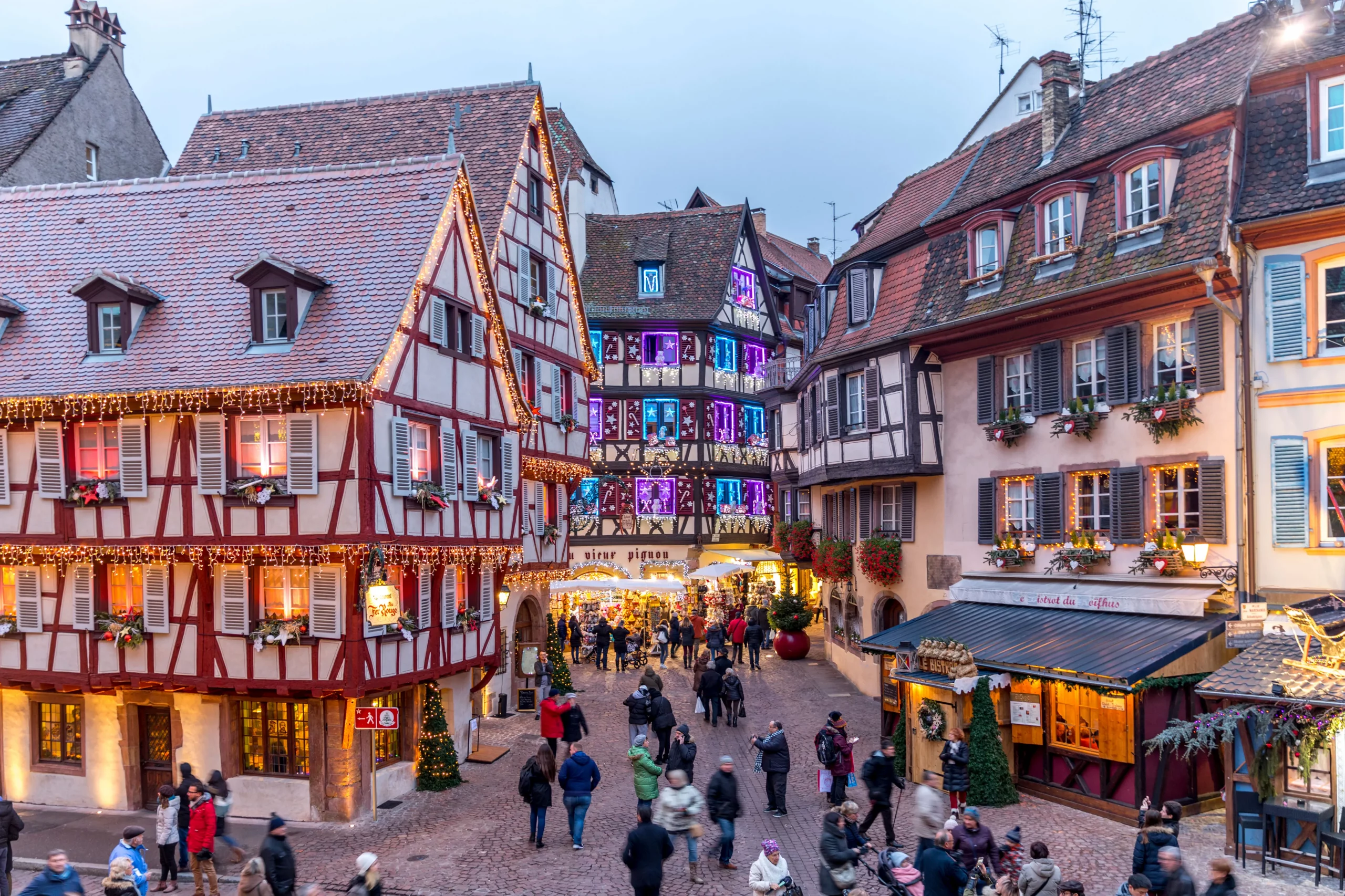Merry Christmas from around the world
Sophia Litton, Reporter

From “Joyeux Noël!,” and “Buon Natale!,” to “Glædelig jul,” and “Merry Christmas,” Christmas traditions are different all over the world. At VHS, there are many exchange students from countries such as France, Denmark, and Italy. Two of this year’s exchange students who are attending VHS this year are juniors Hannah Coicaud and Katrine Rolschau. Coicaud is from Nantes, France and Rolschau is from Odense, Denmark. As Rolchau and Coicaud experience their first holiday season in the states, they reflect on the traditions they usually partake in at home.
In Denmark, people celebrate the holidays a little bit differently than in the United States. A popular Christmas activity is to visit Christmas markets where handmade crafts and treats are for sale. The most popular craft is handmade ornaments. Danish Christmas decorations are made with colors such as gold, red, white, green, and silver, the most popular of which are Julehjerter (Christmas hearts), Julestjerner (Christmas stars), and Julepynter (Christmas ornaments).
Unlike in the United States, most celebrations occur on Christmas Eve in Denmark. Businesses are closed December 24 to 26 for people to spend time with loved ones during the holiday.
“On December 24, people get together with friends and family to eat dinner and later open presents,” Rolschau said.
For Christmas dinner, the most common foods are roasted duck, flæskesteg or roasted pork with crackling, red cabbage, gravy, and roasted or boiled potatoes. In Denmark it is traditional to have a Christmas lunch called Julefrokost which includes similar foods as in the Christmas dinner. For dessert, they have Risalamande which is an almond rice pudding with cherry sauce on top. A common game played with this pudding includes hiding an almond sliver; the person who finds it first wins a prize!
They decorate a Christmas tree, similar to in the U.S., and then dance around the tree. As for holiday music, they listen to the same popular American songs such as, “All I Want For Christmas Is You” and “Santa Tell Me,” Rolschau says. While Denmark celebrates Christmas in their own ways, some aspects of celebration are similar to the U.S.
Merry Christmas, or “Joyeux Noël” as the French would say. Like many countries, Christmas in France is the time to spend quality time with family and friends. One tradition is L’Avent, the advent calendar. Most calendars are filled with chocolate and given to children in late November so they become excited to open it in December. The second tradition is Marchés de Noël or Christmas markets. The biggest market is held in Strasbourg.
“In the markets, there are handcrafted products and traditional French foods,” Coicaud said.
One popular decoration is advent wreaths. They are created using pine tree branches and fir, decorated with red bows and pine cones, and then topped with four candles to represent the four Sundays.
“[Like] in the U.S, we also decorate Christmas trees,” Coicaud said.
You can even find life-sized crèches around villages. Père Noël is what they call Santa Claus. In 1962, a law was passed that made it so it was required to send a response back to any letter sent by a child to Santa in the form of a postcard. Most things are the same about Santa coming down the chimney and leaving gifts in the morning, but one key difference is that instead of hanging stockings above the chimney, children leave their shoes by the fire. If the children are good, the shoes are filled with treats; if they have been naughty, they are filled with twigs.
The Réveillon is the biggest meal of the year, and happens on Christmas Eve. Traditional holiday foods include goose, oysters, capon, turkey, and foie gras. For dessert, they like to enjoy chocolates, fruits, nougat, and bûche de Noël or Yule log. On Christmas they open presents and enjoy time with loved ones. The holiday season ends on Fête des Rois or Three Kings’ Day in which they enjoy galette des rois or king cake. Inside the base of an almond-filled pastry, similar to Denmark’s hidden almond sliver, there is a hidden fève—a baby figurine—inside. The tradition goes as follows: whoever gets the slice with the figurine in it gets to become the king or queen for the day.
Christmas may look different in different countries, but many things are also the same—eating good food, relaxing, and spending quality time with friends and loved ones. Regardless of what people celebrate, it is important that they enjoy the holidays in their own way.
